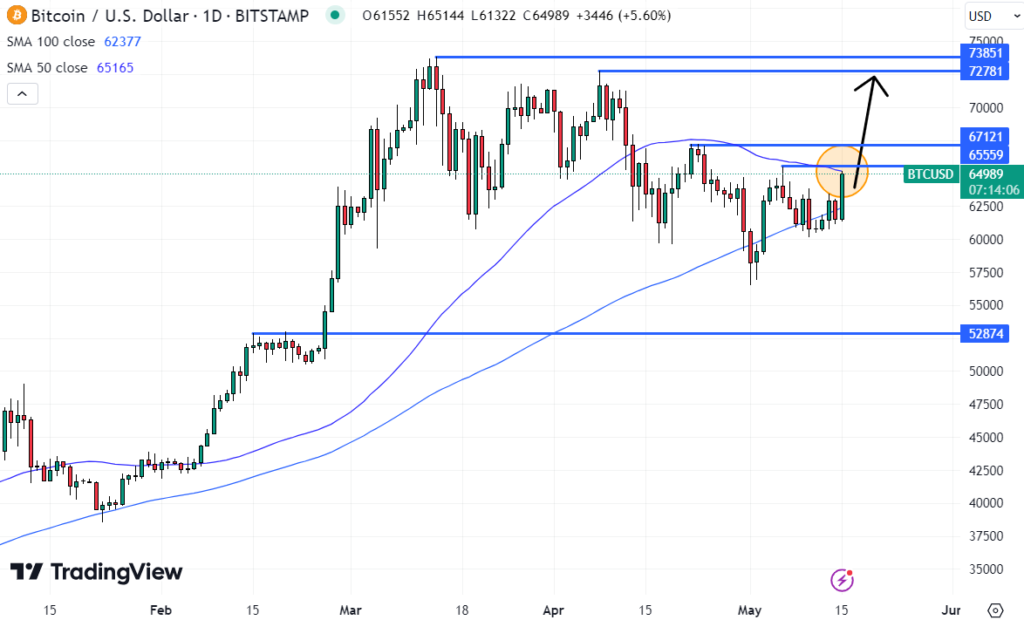Following the release of the US Consumer Price Index (CPI) figures for April, the price of Bitcoin (BTC) rose by more than 5% on Wednesday, reaching $65,000. The report showed that inflation was slowing down, which made the market think that the Federal Reserve might lower interest rates more than once before the end of the year.
The value of Bitcoin went up a lot at the same time that the S&P 500 went up a lot, too. It hit new all-time highs. At the same time, US bond prices and the US Dollar Index hit their lowest levels in one month, changing how the market worked even more. Traders became more sure that rates would be lowered by September. According to CME data, there is now a 71% chance of at least one rate cut by September, up from 65% the day before.
At its 50-day moving average (50DMA) of $65,166, Bitcoin faces a major economic obstacle. Analysts expect short-term gains if BTC goes above this level and its high point in May, which was around $65,500. The next goal is the high point in late April, which was around $67,000. After that, a test of the yearly highs near $73,000 is likely.

Bitcoin’s Range-Bound Behavior Amid Inflation Concerns
Bitcoin has been stuck in a range for the past few months, mostly between $60,000 and $70,000. Concerns about a slow rise in inflation in the first quarter of 2024 have been a big problem. They have stopped Bitcoin’s growth after it hit a record high near $74,000 right before the split event.
The most recent inflation data isn’t very exciting, but it does show that the inflationary pressures seen in Q1 might not last. If worries about inflation keep going down, the macroeconomic situation might change, making BTC more appealing in the middle term.
But past success makes it hard to believe there will be a breakout soon. BTC has had a rough May every year for the past three years, falling 35% in 2021, 15.5% in 2022, and 7% in 2023, according to figures from bitcoinmonthlyreturn.com. Steno Research also says that BTC has not done well in the middle of the year over the last five years.
Post-halving rallies pick up speed 4 to 6 months after the event, meaning a big push-up might not happen until after August. Still, 2024, being an election year, could change this pattern. In the past, markets have rallied before elections, which could go against the usual gloomy summer trends.
Even with these unknowns, Bitcoin’s long-term picture is still good. The price of BTC could go above $100,000 in 2024 or 2025 because of expected rate cuts, the effects of the halving, ongoing government spending, and more people wanting to buy spot BTC ETFs.
As Bitcoin deals with these mixed signals, investors and experts will be watching it closely to see if the current momentum can push it out of its long trading range and towards new highs.







